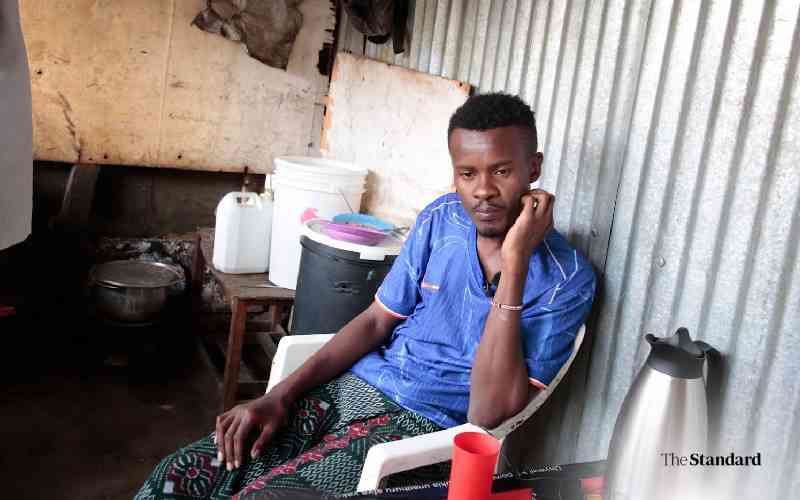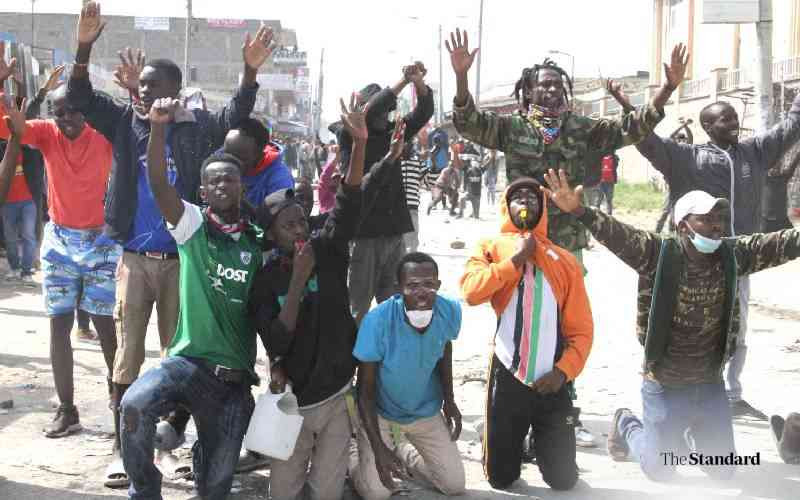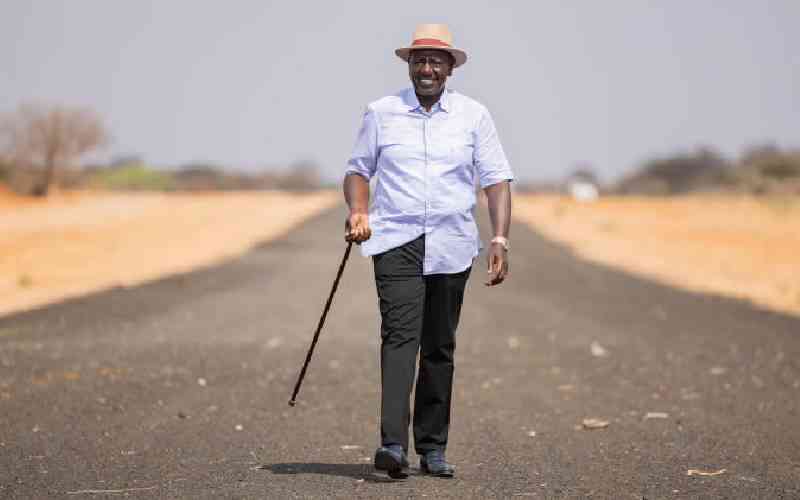
The lead story in the June 23, 2025 edition of The Standard newspaper was a gross misrepresentation of facts, a calculated distortion of history in motion, and a flagrant act of political propaganda masquerading as journalism.
It claimed that Hon Raila Amolo Odinga, the indefatigable champion of democracy and social justice, betrayed the Gen-Z-led anti-Finance Bill 2024 uprising. The paper could not have strayed further from the truth.
Indeed, if there is any individual who has borne the brunt of resisting autocracy and economic oppression in Kenya, it is Raila Odinga.
To attempt to paint him as a betrayer of a movement rooted in justice, accountability and economic freedom is both ahistorical and dishonest. Let us set the record straight.
First, it must be acknowledged that the Gen Z protests did not emerge in a vacuum. It arose from a continuum of Kenyan struggles against neoliberal oppression, punitive state policies, and broken promises.
In June and July of 2023, long before many of today’s commentators even noticed the impact of state fiscal overreach, Raila Odinga led protests against the Finance Bill 2023. That Bill aimed to raise taxes on ordinary Kenyans—on housing, digital services, fuel, and incomes—ostensibly for accelerated development, but in reality to plug the holes left by decades of elite mismanagement and corruption.




Those protests saw the deaths of dozens of young Kenyans, many of whom were shot in cold blood while exercising their constitutional right to assemble and picket. Odinga did not abandon them. He walked side by side with them at great personal risk in the process surviving assassination attempts in broad daylight and full view of cameras.
Fast forward to May 2024. Once again, Odinga led Azimio la Umoja One Kenya Coalition in convening to analyse the newly proposed Finance Bill 2024—this time even more draconian than its predecessor. The coalition invited tax experts, economists, civil society actors, and members of Parliament to the Sarova Stanley Hotel. The result was a comprehensive analysis of how the Bill would escalate economic suffering and choke the country’s productive sectors.
Slides from that Azimio PG presentation were disseminated widely online. These became key tools in the digital mobilization led by Gen Z activists—tools that clarified, educated, and armed citizens with evidence. Gen Z did not spring from nowhere; it took up a baton passed on by the broader Kenyan movement, including Odinga’s own efforts. To claim betrayal, therefore, is to deny this intergenerational continuity and mutual reinforcement. It is a politically expedient rewriting of the facts.
Unlike some establishment figures, who met the Gen Z protests with disdain, Raila Odinga lauded the youth. He did not attempt to hijack their struggle. He did not seek to impose an Azimio stamp on it. Instead, he respected its organic nature and celebrated its unprecedented success. On June 25, 2024, when protesters overran Parliament and the Judiciary, and also forced a dissolution of the cabinet, it was not lost on him—or any serious political analyst—that Kenya had entered uncharted territory. The youth had achieved in weeks what conventional political movements had failed to do in years.
At that point, the conversation shifted. From opposing a singular Finance Bill, the protests now called for the resignation of President Ruto. “Ruto Must Go” was not a policy demand. It was a political ultimatum. With the three arms of government discredited and overran, Kenya stood at the horns of a political dilemma.
Faced with this reality, any responsible leader must assess possible outcomes. As a party, Azimio outlined five possible scenarios:
Scenario one, resignation of President Ruto and succession by the Deputy—a constitutional option. Was this the alternative the protestors were suing for?
Second scenario, a military intervention—akin to developments in Sudan, Egypt, or Tunisia after the Arab Spring “revolutions”.
Scenario three, a palace coup—which history shows can usher in prolonged instability.
Stay informed. Subscribe to our newsletter
Scenario four, outright anarchy—with balkanised militia rule, civil strife, and state collapse.
And finally, scenario five. The exercise of popular sovereignty through Article 1 of the Constitution—a national dialogue and citizen-led resolution.
Given the foregoing Odinga championed the fifth option. He called for a national conversation—not to dilute the Gen-Z momentum, but to anchor it in constitutional legitimacy and not let their gallant efforts go to waste. He did not betray the movement. He sought to safeguard it from being hijacked by chaos and reactionary forces.
Odinga’s decision to take the high road, to insist on dialogue and national coherence, cannot be termed a betrayal as The Standard’s propaganda seeks to plant in the psyche of its readership. It is leadership. True, the call for a national dialogue was rejected in the heat of protest. That is the nature of uprising—radical, emotional, unstructured. But it is the duty of elder statesmen to offer structure and a path forward, not to cheer as the country teeters over the edge. To argue, as The Standard does, that Odinga capitulated or colluded is to ignore history and distort facts. By July 2024, street demonstrations had already subsided. The momentum had shifted from mass action to elite reaction.
Those who now claim that Odinga betrayed Gen Z are either willfully blind or politically dishonest. They ignore that it was Odinga, more than many other leaders, who pushed for the enactment of the new Constitution that enshrined Article 1—the sovereignty of the people.
It would be remiss not to interrogate The Standard itself. The newspaper’s recent editorial line raises questions about its motivations. Owned and managed by figures tied to past regimes and elite economic interests, The Standard has a documented history of silence during state-sponsored violence, assassinations, and repression.
The Monday lead story reeks of the same betrayal it seeks to project. It betrays honest journalism. It betrays objectivity. It betrays the Kenyan people’s desire for truthful, constructive engagement. Let us be clear. Kenya is in the midst of a profound transformation. Gen-Z has done the country proud. They have reclaimed civic agency and shaken the foundations of impunity. But their struggle is not detached from the broader freedom movement. It is part of the same arc of justice that leaders like Raila Odinga have pursued for decades.
To attempt to split that arc, to pit the present against the past, is to aid the oppressors. It is to do the devil’s work for it. We must reject false dichotomies and manufactured betrayals. The real betrayal would be to let the movement descend into anarchy. The real betrayal would be to let state violence return unchecked. The real betrayal would be to abandon the dream of a united, just and democratic Kenya. And that’s what the Memorandum of Understanding signed on March 7, 2025 to guard against.
Raila Odinga did not betray the people. He has always stood with the people. He stands with them still. Let The Standard look for traitors elsewhere.
The writer is the Executive Director of the Orange Democratic Movement